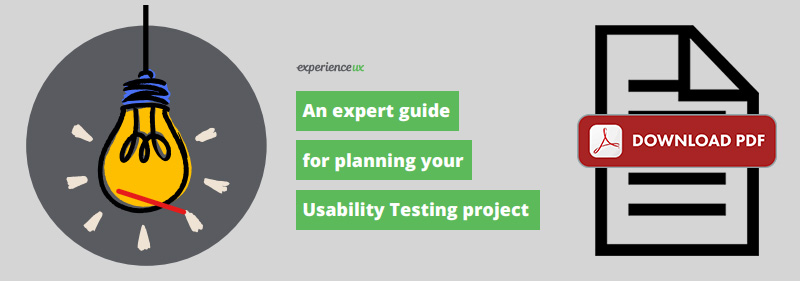Sometimes questions are more important than answers
What are user journeys?
A user journey is a path a user may take to reach their goal when using a particular website. User journeys are used in designing websites to identify the different ways to enable the user to achieve their goal as quickly and easily as possible.

User journeys map out every step to reach a goal
User journeys are the step-by-step journey that a user takes to reach their goal. This journey will often consist of a number of website pages and decision points that carry the user from one step to another. The user journey is used to map out the current journey a typical user might take to reach their goal. This journey is then redesigned to form an ‘ideal’ user journey free from frustration. The output is traditionally a flow diagram demonstrating each page and decision point throughout the entire process.
First, understand who is using your website
In order to create realistic user journeys, it is important to first identify the users through an exercise called user profiling. Each user will have a task or goal they are trying to reach on the website, whether it is purchasing a product, finding opening times or cancelling a direct debit in a bank. Users have a need they must fulfil, and the steps they take to satisfy that need are referred to as a user journey.
Second, map out the easiest user journey
Each user goal can be first mapped out using the current website to identify any flaws or frustrations. This is often referred to as user journey mapping or customer journey mapping. Once an understanding of existing user journeys is fully illustrated, website designers can set out their recommended user journey – one which is as simple and easy as possible for users to reach their goals. This will form the basis of the new website.
Be confident that the website will cater for user needs
The map of the existing user journey provides a clear view of how easy or difficult it is for a typical user to reach their goal. This map will speed up the planning of a new website because it immediately highlights the current issues. If this map is then followed by an ideal user journey map, the project team gets a quick feel for how the website should work, what content and functionality are required to meet the user’s needs, and what aspects of the website must be in place to support the journey.
Developing a website around real user journeys provides confidence that the final solution will cater to the needs of real people.
Start with the best possible user journey, then compromise
The ideal journey can often prove to be difficult to implement, with business objectives and technical/design limitations impacting the ability to produce a quick journey; it is therefore important to create the ideal journeys with a multidisciplinary team to ensure all angles are covered. Balancing user goals and business goals is very important at this stage to ensure both are taken care of without impacting each other.
Conclusion
User journeys are critical in the design of new websites by highlighting the current issues and producing an ideal picture from a typical user’s perspective early in the process. As long as the project team includes web designers to help balance the business goals with the user goals, user journeys are invaluable in creating a new website.
You may also like
More UX Methods Questions
Usability testing is a way to see how easy to use something is by testing it with real users. Users are asked to complete tasks, typically while they are being observed by a researcher, to see where they encounter problems and experience confusion. If more people encounter similar problems, recommendations will be made to overcome these usability issues.
User-centred design is a process or set of tools used to design a service which focuses on what users need at the very beginning and continues throughout development until launch. Typically services are designed from a technical and business perspective, with consideration for users added in later. Instead, User-centred design ensures the service focuses on what users need before balancing this with the technical and business requirements.
Wireframing is a way to design a website service at the structural level. A wireframe is commonly used to lay out content and functionality on a page which takes into account user needs and user journeys. Wireframes are used early in the development process to establish the basic structure of a page before visual design and content is added.
Website prototypes are interactive demos of a website. These are often used to gather feedback from project stakeholders early in the project lifecycle, before the project goes into final development
User requirements capture is a process used to understand what typical users will need from a service which is about to be designed. Users are observed using similar services and interviewed about the ways they go about planning and completing their goals. This information is used to identify a list of content, features and functionality the new service must have in order to satisfy the needs of its users.
Customer profiling is a way to create a portrait of your customers to help you make design decisions concerning your service. Your customers are broken down into groups of customers sharing similar goals and characteristics and each group is given a representative with a photo, a name, and a description.
Card sorting is a technique that involves asking users to organise information into logical groups. Users are given a series of labelled cards and asked to organise and sort them into groups that they think are appropriate. Card sorting helps you to design an information architecture, workflow, menu structure or website navigation paths.
A user journey is a path a user may take to reach their goal when using a particular website. User journeys are used in designing websites to identify the different ways to enable the user to achieve their goal as quickly and easily as possible.
Focus groups are a research method used to gather feedback and opinions from customers. Each person in the group is encouraged to participate in a discussion which is pre-planned by a researcher and is guided by a facilitator. Focus groups are typically used to gauge opinion and gather information from users about products, services, and features before they have been developed.
Remote usability testing is a way to test how easy to use a website is with users who are in a different geographical location. Traditional usability testing brings users and researchers together in one place to conduct the test, whereas remote usability testing allows the researcher and user to be in different locations while the test is completed.
An expert review is where a usability expert uses his/her knowledge and experience of testing websites with users to walk through a website in the shoes of a typical user. The expert will spot problems and recommend changes to improve usability when budgets and timescales don’t allow for user research.
Service design makes a service easier to use, more useful and more desirable for the customers who need to use it: the service user. Whether creating an entirely new service or improving an existing one, service design focuses on what customers really need at each stage of their interaction with an organisation.
Ethnography is a study through direct observation of users in their natural environment rather than in a lab. The objective of this type of research is to gain insights into how users interact with things in their natural environment.
Tree testing is a way of evaluating a proposed site structure by asking users to find items based on the sites organisation and terminology. This online test only displays the navigation links and removes any additional clutter.
Find Out More
Let’s Chat
If you’re ready to introduce the innate power of human centeredness to your products, services and brand, drop me an email today.
01202 293652 alicarmichael@experienceux.co.uk

